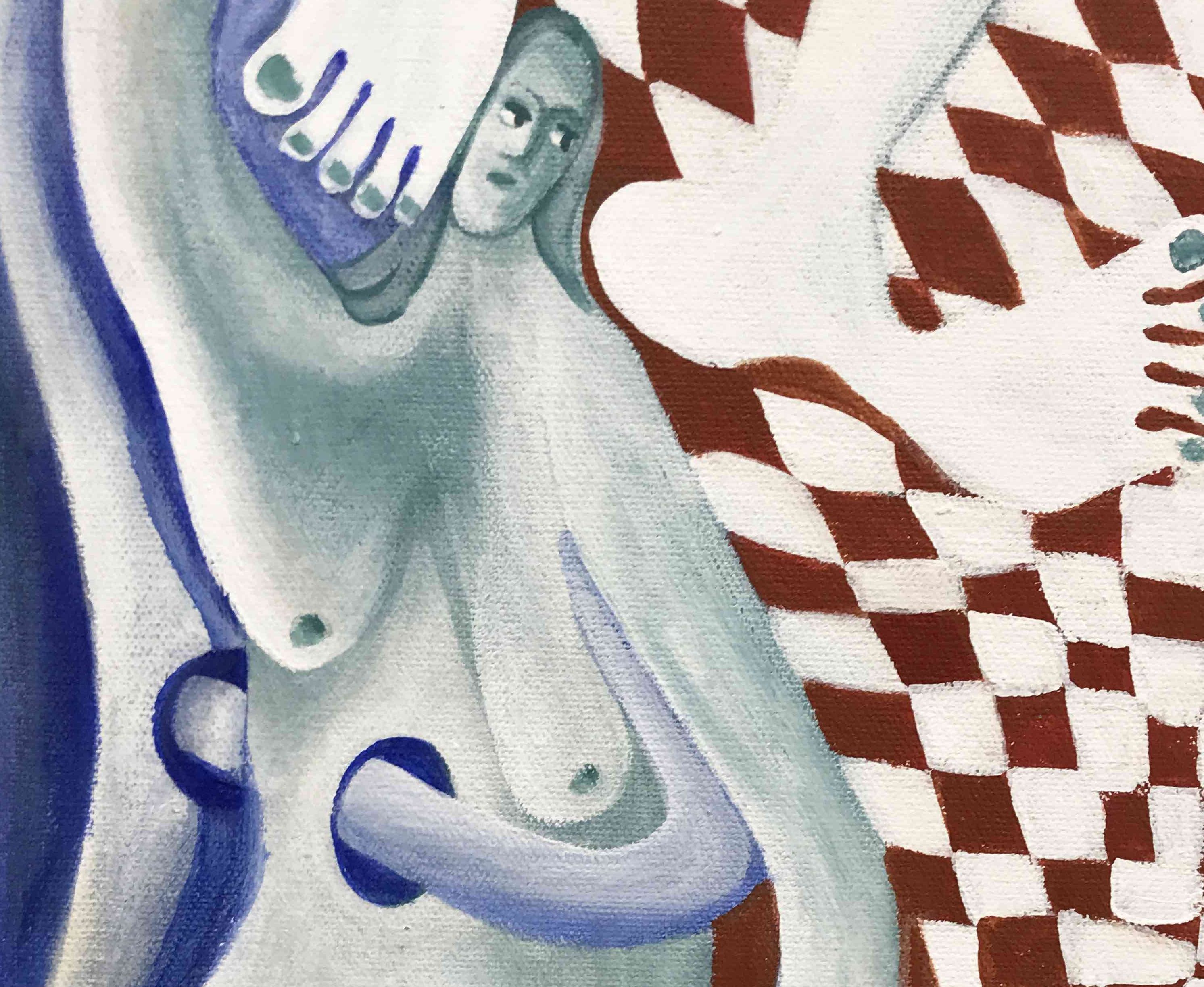
Essay
A Pregnant Thought, or How to Give Birth to a Painting: Jesi Jordan
by Verana Codina
At Galería Daniela Elbahara
Reading time
5 min
I have to confess that my visit to the recently opened show A Pregnant Thought, by the Canadian artist Jesi Jordan, didn’t turn out as I expected. “And what did I expect?” you’ll ask. Prior to my appointment at the Galería Daniela Elbahara, while briefly researching the artist’s work, I thought with some weariness: “Yet another painting show.” However, my glut soon turned into surprise.
A Pregnant Thought is composed of nine works in total, of which eight are acrylic paintings and the ninth is a sound piece. The latter wasn’t originally part of the curation; it was brought in when Daniela, the gallerist, asked Jordan to include an audio guide to make up for her absence at the opening, as the pandemic had prevented her from traveling to Mexico City.
Far from just a simple audioguide, this sonic construction is mainly composed of narrations, accompanied by layer upon layer of sounds that surround you and return to you a piece of the painting in front of you.
Although the paintings are a world worth discovering on their own, the accompanying sound piece aptly fulfills the function of a personalized guide who takes you by the hand throughout the tour. And if that guide is the artist herself, what could be better?
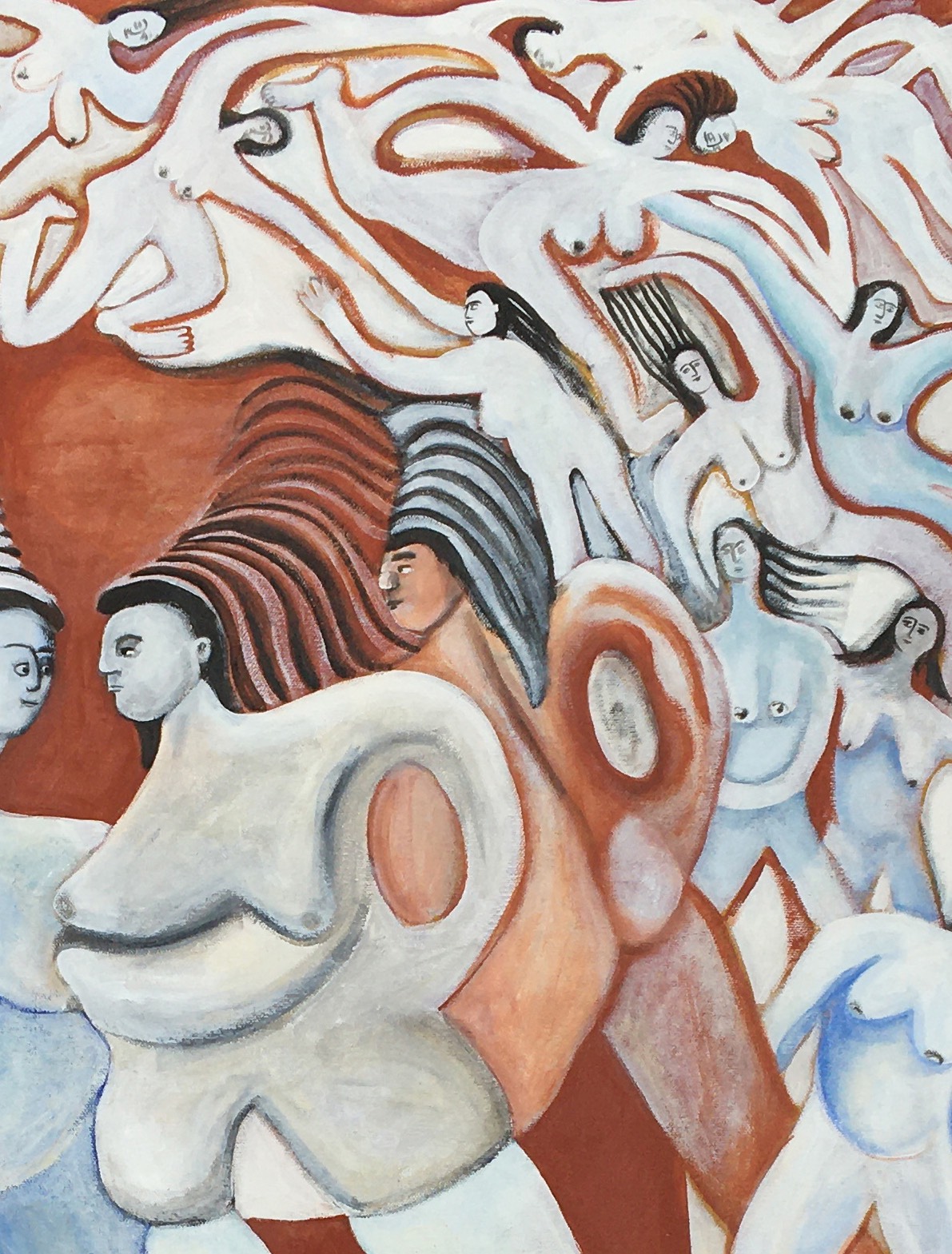
Speaking personally, I rarely register to be part of a guided tour of an exhibition since it gives me the feeling that the information provided only leads to closed readings, with no room for the visitor’s imagination. Instead, Jordan has created an evocative piece in which, among distorted voices, samples of doors opening and closing, as well as reverb effects, it was easy for me to dive in and let my mind wander through the different layers that the sound effects produced alongside each picture.
It’s in this plunge that both the show’s title and the brief reflection accompanying the curation make sense. Jesi traces an analogy from the experience of gestation in order to talk about her interior, her entrails, what she has inside. In her words, the paintings “are deep internal monologues that echo inwards.” By undertaking a play on words with “pregnant” and “thought,” the artist expresses her interest in the way our mind conceives—engenders, impregnates, procreates.
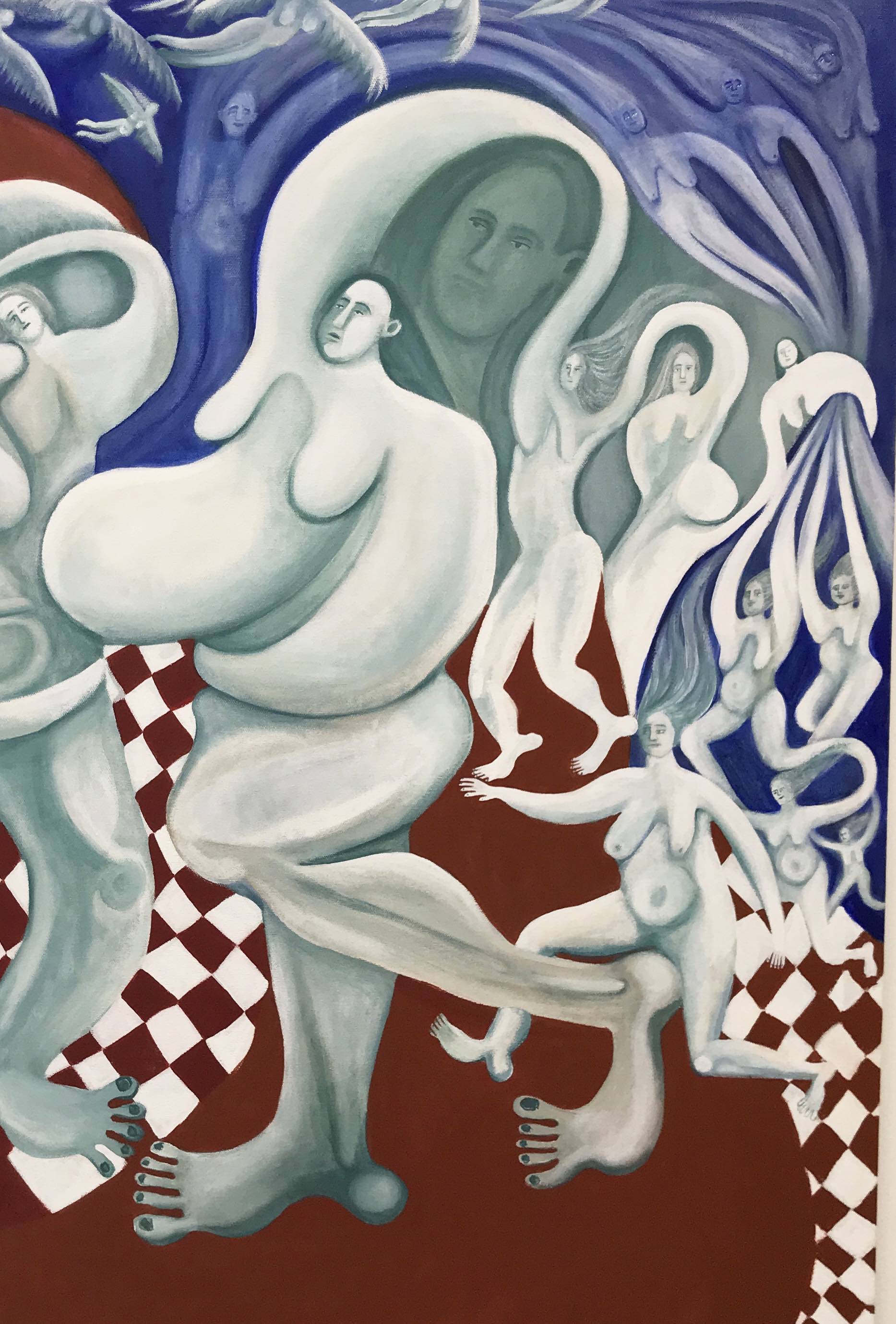
Without having yet read the introductory text or listened to the audio guide, the first reference that popped in my mind when I saw the paintings was the work of the Italian artist Giorgio de Chirico, whose metaphysical painting formed basis for the Surrealist movement. I found certain winks in the lines of the figures and in the unfolding of the spaces that are multiplied and twisted, that appear and disappear. Throughout my tour, these continuous appearances and disappearances began to become so abstract that I started to perceive only fragments of the paintings.
It’s no coincidence that most of the photos I took during my visit were reduced to details of the canvas. I found that the portions spoke to me more than the whole: a fist submerged in the recess of a stomach; women who sometimes turn into trees, other times into angels; humanoids clinging to the head of a female figure; two figures standing on a checkered floor; a pregnant nose. Little by little I was presented with the paintings’ pieces, which I discovered with the help of the sounds and recited texts that seemed to emanate from each of the fragments.
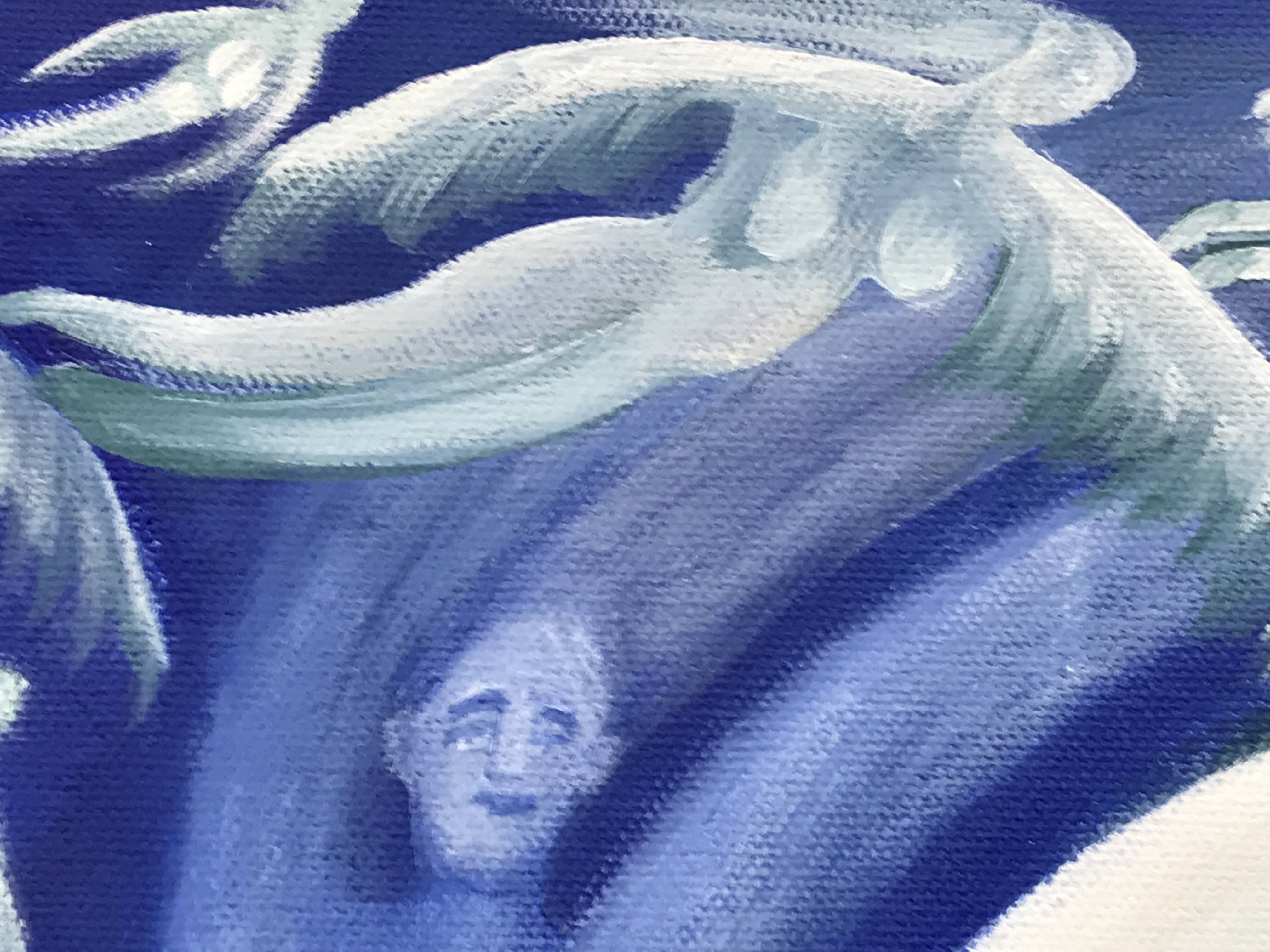
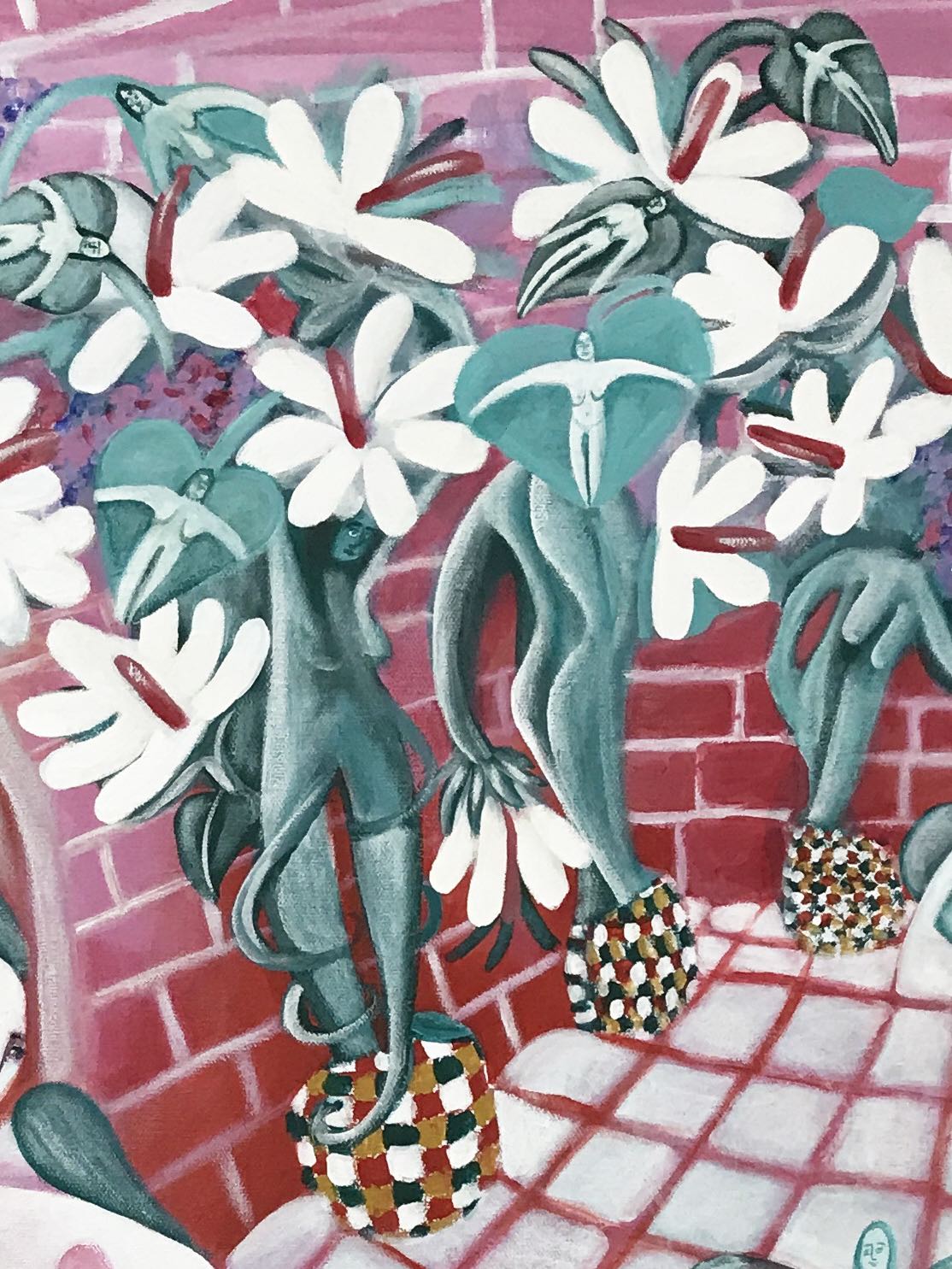
As I continued my tour, the correspondence between Surrealism and this work became more intimate. The juxtaposition of visual and sonic elements reminded me of what that avant-garde movement described as the marvelous. This category sought to reconcile the relationship between the self and the external world by overriding the alienation of the individual caused by rationality. To achieve this, the surrealists sought to access the unconscious through techniques of automatic writing and drawing. In Jordan’s words and the words’ association with images, I encountered a kind of free-thought exercise as a mechanism for tracking emotions and ideas that are beyond the reach of reason.
These paintings act like emotional X-rays, like an ultrasound that allows one to see inside. Looking and therefore shaping what you carry inside also means becoming aware. By putting it on canvas and adding sound, the artist has not only given a form to her thoughts, but also a voice and a movement for their self-expression. They’re her children. It’s her mind swollen with thoughts, thoughts reproduced within her, that she has to embody, care for, and protect; she feeds them; she watches their birth.
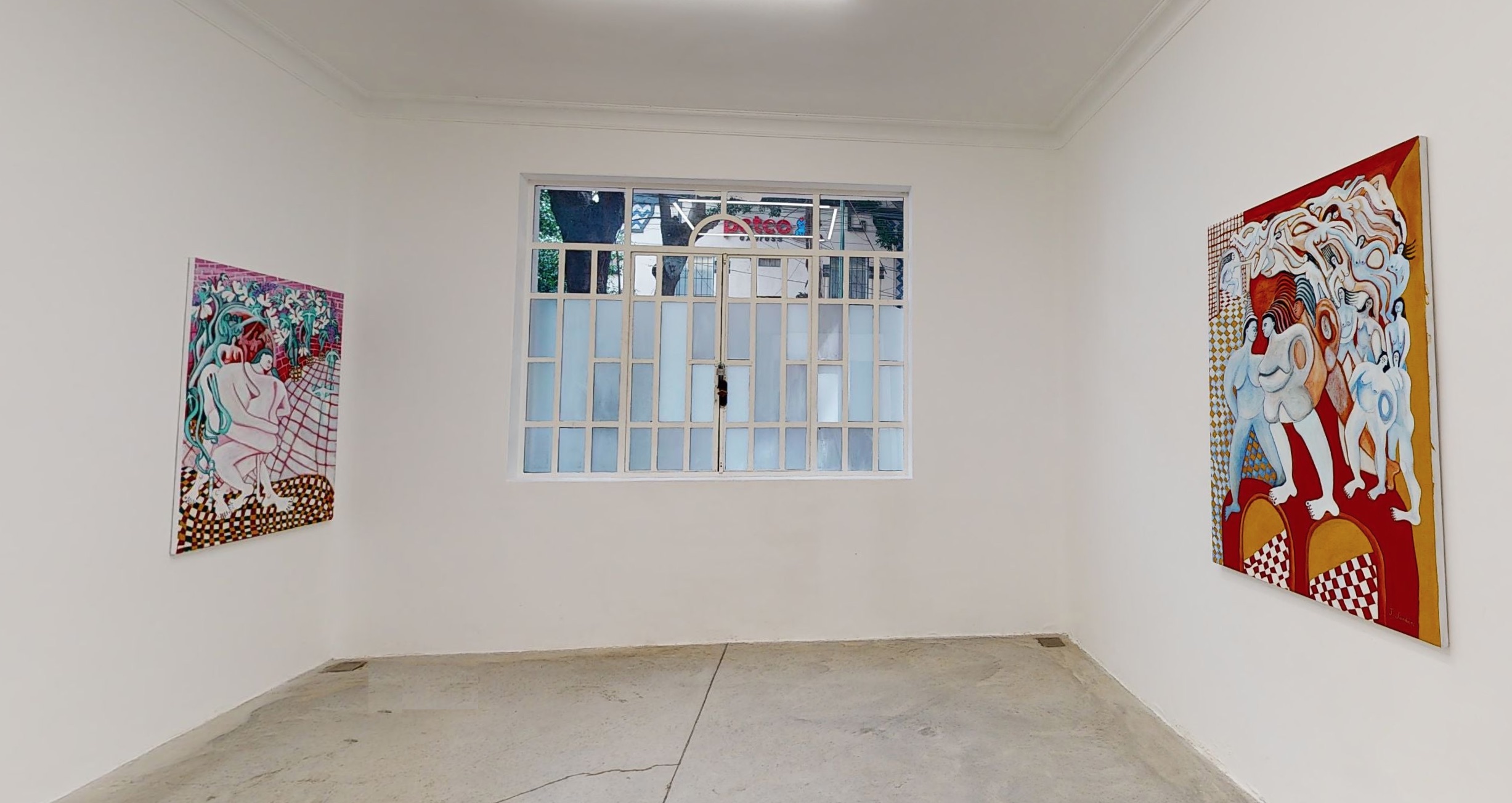
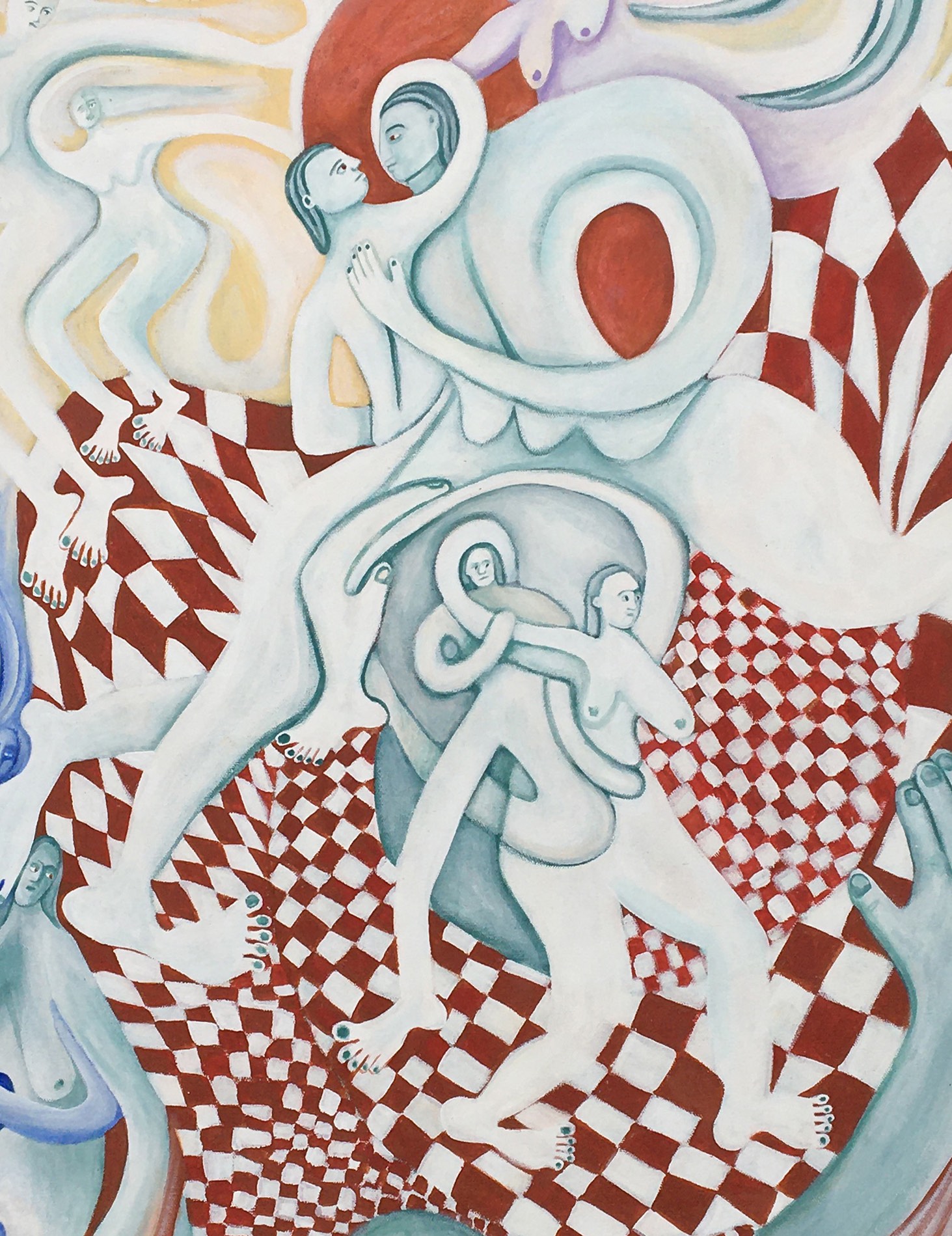
The exhibition will be open until October 30. Schedule your appointment writting to danielaelbahara@gmail.com.
Access the virtual tour here.
Translated to English by Byron Davies
Published on October 1 2020